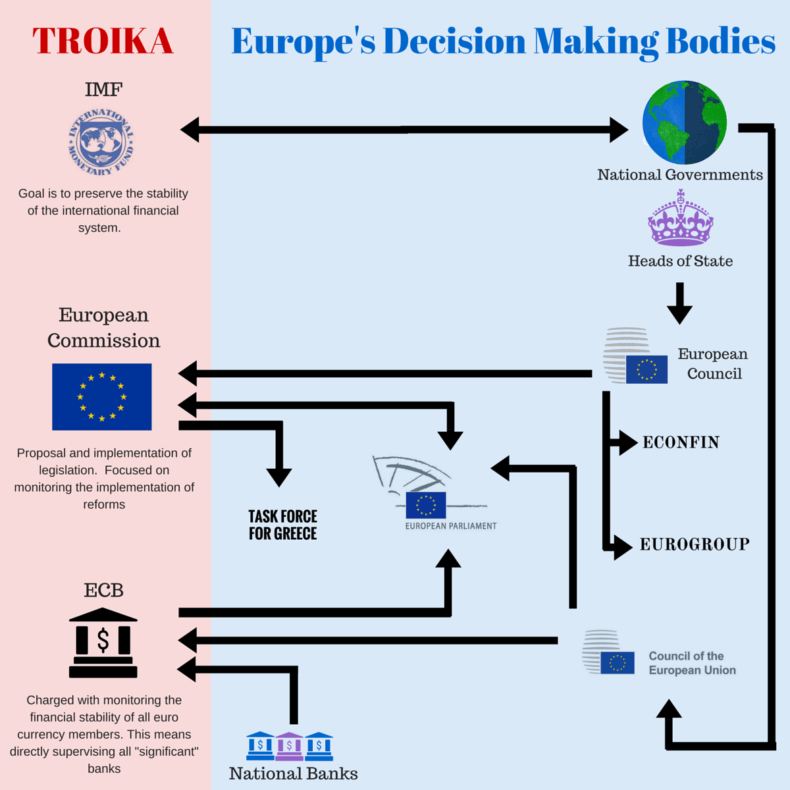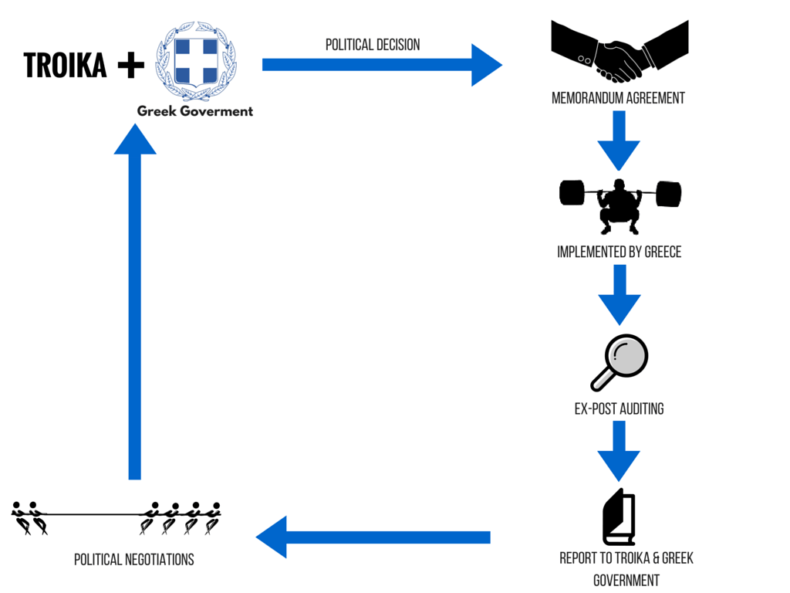A lot has been said about the Greek Crisis, mostly about the failure of consecutive Greek governments to deal with Greece’s problems (true), about the endless Eurogroup meetings in which Greece is in one side and all the other countries in the other (also true), or the vast amount of money which has been given to Greece (again true). But apart from that, how much do you know about the Greek Crisis and how it has been handled in its entirety, and not just in regards to the Greek governments?
The basics are: that the Greek Crisis is a financial crisis in Greece, which due to the fact that it initially threatened the Eurozone stability, was handled by the Troika – a coalition of the International Monetary Fund (IMF) and the European Union. With this in mind, the Troika entered into a Memorandum of Understanding with Greece. The terms were simple: Greece agreed to implement the terms of the Memorandum, the Troika agreed to monitor it and to give out bailout money based on the implementation. Sounds simple? Far from it.
The last 7 years in Greece are proof of what happens when technocratic monitoring, and observation of financial and reform packages are turned into a political haggling process.
So, how are decisions taken in regards to the memorandum processes?


Looks complex? It is. What the process basically amounts to is substitution for a balanced, measured memorandum package with a politically motivated measure of packages. Three times a mix of 50:50 reforms and fiscal measures has been swapped for a mix of 5:95. But, one might argue, the complexity of form is irrelevant, and performance should be the measure of things.
So how has the Troika been performing? 3 adjustment programs, 12 reviews, 220 billion Euros and 7 years down the road, the results are abysmal: 179% debt, 0% growth, 25.1% unemployment and no end in sight to the horrible austerity which has been inflicted on the country.
As for the actual monitoring of the program, it has been poor to say the least. The Troika has been monitoring measures with an Observed/ Non-observed system, in regards to legislation passed. This simply does not work in Greece. In the last evaluation (which was postponed for months on end at great cost to the Greek economy), the final nominal compliance rate was calculated at 43%. If, however, a proper evaluation was undertaken, this was shown to be closer to 15% (most of the difference has to do with raised taxes, tariffs and other similar austerity measures, leading the Greek public to equate reforms with taxes). And this is the last in a string of similar evaluations.
Finally, what about transparency? Well, there is none. The negotiations are handled behind closed doors, in which no one takes authorship of the proposed measures. The equivalent measures which are then put in place instead of reforms (almost invariably concerning taxes) are also without ownership. The result is that the measures foisted on the Greek people are seen as alien and oppressive, rather than any attempt being made to persuade people of their necessity (or lack of any viable alternative).
All this makes the already pronounced problems faced by Greece and the Greek economy seem insurmountable: living tranche by tranche, evaluation by evaluation, with measures which are partly implemented, no stability and no long term solution in sight.
The solution to the Greek problem is simple: more transparency, greater dialogue with the societies, and an independent observatory of the Memoranda which would keep all the participants accountable and honest about what is going on.
Instead of what is in place now, this could be the solution:

This article is based on the Paper published by Greek Liberties Monitor, which can be found here.


